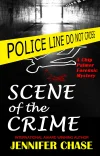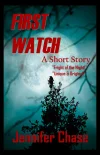 While conducting various types of research for my novels, I realized that there are some very interesting forensic facts that may or may not be widely known to most people. I would like to share some of these fascinating facts and definitions from time to time.
While conducting various types of research for my novels, I realized that there are some very interesting forensic facts that may or may not be widely known to most people. I would like to share some of these fascinating facts and definitions from time to time.
ABO Blood Groups
This is a blood group system that was first proposed by Karl Landsteiner, an Austrian biologist and physician, in 1900. The system consists of antigens, substance that produces an antibody, found on the surfaces of red blood cells and the corresponding antibodies in the serum.
The approximate percentage of the U.S. population blood type:
Type A (42%)
Type B (12%)
Type AB (3%)
Type O (43%)
Accidental Characteristics
These are characteristics in a specific material that are required by wear or by some accidental or other non-repeatable circumstance during the manufacture. It can also be describe as a small defect that gives a unique or “accidental” characteristic. These can be found in tire treads, shoes, bullets, glass, plastic bags, and many other items. These characteristics are extremely important in the identification and comparison of evidence.
Adenine (A)
This is one of the four nucleotide bases the compose DNA.
Adipocere
This is the grayish, wax like substance that forms from the result of the slow chemical reaction between body fat and water during the decomposition process.
Algor Mortis
This is the rate of cooling of a body after death. It can be difficult to determine the time of death because many variables are taken into consideration, such as temperature, fat on victim, and the exposed area where the body was found.
Amalgam
This is the material used as filling for cavities or restorative dentistry. For identifying a victim, dental records are extremely effective.
Anthropometry
This is type of body measurement used to identify individuals. This term is often associated with a system of body measurements first developed by Alphonse Bertillon, a French law enforcement officer and biometrics researcher, for identification proposed, but it was replaced by fingerprinting in the early 1900s.
Back Spatter
This is a type of bloodstain pattern that occurs when a person suffers a gunshot wound inflicted from a few inches or less. Back spatter can also occur when a victim is struck with a forceful blow. It results when the perpetrator moves backward from the blow and there is cast off spatter.
Victor Balthazard (1852-1950)
He was a French forensic scientist that served as a medical examiner for the city of Paris and helped to advance fingerprint, firearm, and hair analysis with the emerging forensic science.
Barium
This is a metal element found in gunshot residue that originates from the primer.
Base Pair (BP)
This is a pair of complementary nucleotides that bond together through hydrogen bonds and makes up the characteristic double-helix shape to DNA.
Beer’s Law (Beer Lambert Law)
This equation describes the relation of the concentration of an analyte (dissolved in a solvent) to the amount of electromagnetic energy that a sample will absorb.
Behavioral Evidence
This covers a broad category of forensic disciplines and investigative tools that includes forensic psychology, psychiatry, neurology, neuropsychiatry, neurophysiology, profiling, and polygraph testing.
Bite Marks
This is a type of impression evidence that can be left in the skin of a victim, but also in food, chewing gum, and other miscellaneous items such as pens and pencils. There are distinct features and characteristics in the dental structure, such as distance and angles between teeth, missing teeth, fillings and other dental work and unique wear.
Cannelures
The small grooves imprinted by rolling on the base of a bullet or near the top of a cartridge case.
Cobalt Thiocyanate
This is the chemical regent used as a presumptive test for cocaine. This regent is dissolved in distilled water, sometimes with other ingredients such as glycerin or ammonium, and added to the cocaine powder.
Conflagration
An extremely large, highly destructive fire.
* * *






































Fascinating information Jennifer – useful to save.
LikeLike
Interesting and very scientific. Thanks! I have to make sure not to bite anyone when I get into a rage. Art
LikeLike
Jennifer,
Tons of good information, with one piece of bad information.
There are severe limits to bite mark evidence. It is useful if DNA from the offender can be found, but direct matches of a bite to a mouth are extremely difficult, due to the flexibility of human skin and fat. There’s some information on this here.
Even the experts are undecided as yet as to the limits of bite mark evidence. Possibly in another ten years we’ll have a solid protocol for the use of bite mark evidence, but we don’t appear to have it yet.
Wayne
LikeLike
An author after my own heart 🙂
LikeLike
I love your postings. Thank you for taking the time and congratulations on your books.
LikeLike
Thank you! I appreciate your comments 🙂
LikeLike